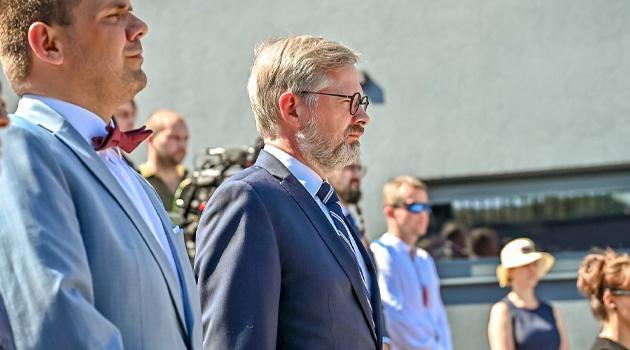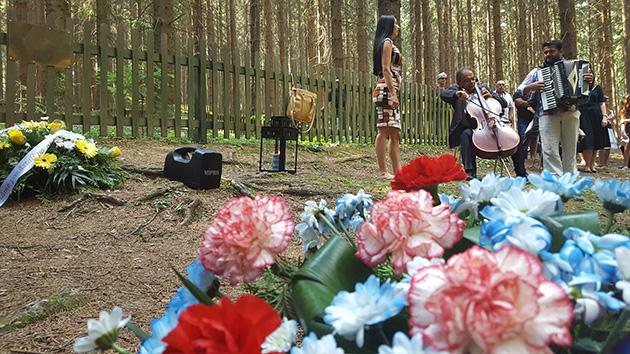Czech PM: The fate of the Roma during WWII is not just a tragic chapter of our history, but one that has been covered up

Czech Prime Minister Petr Fiala (Civic Democratic Party – ODS) believes that the sad fate of Romani people from Bohemia and Moravia during the Second World War is not just tragic, but one that has remained covered up, to a certain degree, as a chapter of Czech history. He made the remarks yesterday in the Blansko district at the Hodonín u Kunštátu Memorial to the Holocaust of the Roma and Sinti in Moravia, where people gathered to commemorate the 79th anniversary of the forced mass transport of 749 Romani prisoners to the Auschwitz Concentration Camp.
Those forcibly relocated at that time were both adults and children, the youngest of whom was just four months old. Fiala said that hatred, during the Holocaust, materialized as a murderous system of horrifying dimensions.
The Prime Minister reminded the audience that there had been two concentration camps especially for Romani people on the territory of what is today the Czech Republic, the camp at Hodonín u Kunštátu and the camp at Lety u Písku. “Entire families were forced to live here. Men, women and children lived in inhumane conditions suffering from hunger, illness and slave labor. Many died here, while what awaited others was suffering in the form of being driven to work at camps in Germany or being transported to Auschwitz,” Fiala said.
According to the Prime Minister, it has taken the state a long time to deal with this history given the need to buy out the sites of the camps from their previous owners and such. “During that time, those who were eyewitnesses to this history, for whom such a memorial would have been a form of satisfaction, gradually passed away. If there is anything history has to teach us, it is that it is necessary that we see such tragic events not just as sentences in textbooks, but that we be able to associate them with specific locations and the fates of real people,” he said.
The director of the Museum of Romani Culture, Jana Horváthová, said members of her own family had been sent to Auschwitz. “None of them ever returned. I grew up in the shadow of their dark stories, which it took me a long time to understand,” she said.
Horváthová also recalled that her grandfather, the lawyer Tomáš Holomek, even established a short-lived commission on compensation for the Holocaust and its Romani victims in 1970s Czechoslovakia during communist rule. The museum has been organizing such commemorative ceremonies at Hodonín u Kunštátu annually since 1995, when they received support for such an activity from the mayor for the first time.
In 2009 the state bought out the Žalov Cultural Heritage Memorial, the site of a mass grave for some of those who died in the camp. It was first administered by the National Educational Museum, which began to build a memorial and permanent exhibition there.
In 2015 the memorial was transferred to the Museum of Romani Culture, which opened it to the public in 2019 and opened the permanent exhibition there last year. The camp was designed to accommodate 300 people during the Second World War, but about 1,200 people were crammed into it, with very poor conditions for maintaining personal hygiene.
An epidemic of typhus broke out in the camp within the year because of the way it was managed. On 22 August 1943, 749 Romani prisoners were forcibly transported from Hodonín u Kunštátu en masse to the Auschwitz Concentration and Extermination Camp run by the Nazis in occupied Poland.
